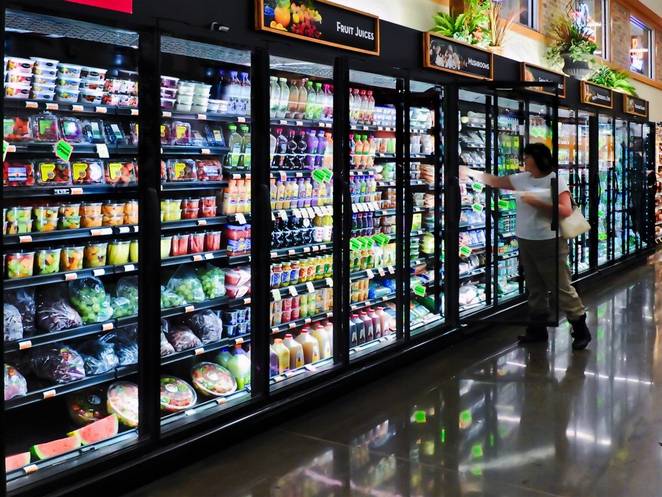Saturday, 13/12/2025 | 13:40 GMT+7
Apparently those giant coolers and fridges full of all that unhealthy frozen prepared food eat up 56 percent of a grocery store's electricity. The refrigeration battery, like the Powerwall, works by storing energy when power is cheap, smoothing out the demand curve. However it does it with water, not lithium.
The battery plugs into existing cooling chiller systems to freeze the water in the batteries at night, and use the cold to reduce cooling loads in the daytime, when the doors are being opened enclosed and load is highest. This can shave the peak electric load by 40 percent and total electricity bills by as much as 20 percent. It also can work as a emergency backup system; according to Axiom.

A single 2-4 hour power outage can cause hundreds of thousands of dollars worth of food spoilage. The Refrigeration Battery offers supermarkets a cost-effective alternative to large backup gensets (diesel or natural gas), and it does not require air pollution permits or fuel.
Using ice to time-shift cooling loads is not a new idea; Calmac does it for big air conditioning systems and Ice Bear for little ones. However designing it specifically for fridges is clever, and it doesn't "require physical changes or controls programming modifications to central refrigeration systems."
Mai Linh








 Enhancing capacity to develop and implement energy efficiency policies at local level
Enhancing capacity to develop and implement energy efficiency policies at local level
 Bosch Vietnam Plant Benefits from Investment in Energy Efficiency
Bosch Vietnam Plant Benefits from Investment in Energy Efficiency
 Webinar 2: “Financial Support for Energy Efficiency Enterprises – Opportunities and Challenges”
Webinar 2: “Financial Support for Energy Efficiency Enterprises – Opportunities and Challenges”
 Vietnamese enterprises achieve green growth and cut costs through energy efficiency
Vietnamese enterprises achieve green growth and cut costs through energy efficiency
 Promoting Energy Efficiency for Technical Staff of Brick and Ceramic Sector
Promoting Energy Efficiency for Technical Staff of Brick and Ceramic Sector
 Capacity Building for Program Implementing Entity
Capacity Building for Program Implementing Entity
 Enhance Energy Efficiency Knowledge for Managers of Cement Industrial Enterprises
Enhance Energy Efficiency Knowledge for Managers of Cement Industrial Enterprises